Do you wonder if RV batteries charge when your camper is plugged into shore power? Yes, your RV battery should charge when plugged in as long as your camper’s electrical components are all working correctly.
Without understanding how your RV’s battery and 12-volt system work, you’ll not know what to look for when things go wrong, so I put all the information in this guide.
Keeping your RV house battery bank charged is the only way to have power when you’re on the road or boondocking, so stay right here to ensure it’s getting a full charge every time you plugin!
What Happens When You Plug in Your RV
There are things you need to consider when charging up your RV battery off your home or campground power grid, like proper wiring, the correct converter, and installing the right type of battery.
When the power flow is correct, and you’re getting the total amperage for your motorhome, travel trailer, or fifth wheel, you’ll have full use of all its appliances and lights, as well as having the power to charge your house battery or batteries.
If you’re applying a lesser electrical load to your camper, for example, through a 30A plug adapter for a 50A RV, the battery should trickle charge. Still, you may not have the full function of all your appliances, especially the air conditioner.
Many newcomers to RVing don’t understand that many major camper appliances, like the refrigerator and water heater, still need 12-volt power to run, so you can’t ignore battery charging issues.
How Your RV Battery Charging System Works
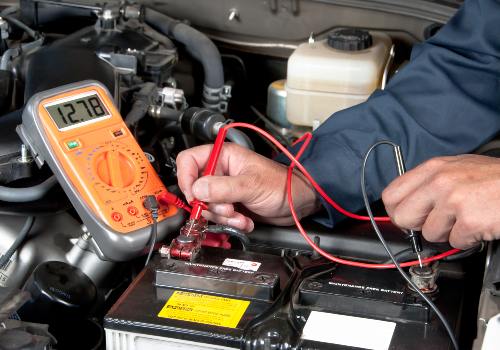
When you plug your RV into shore power or hook it to a generator, the electricity comes into your camper through the cord and goes to the converter and fuse box.
The fuse box holds breakers, just like a residential electrical box, so any electrical overloads or faults will trip the fuse and stop the power flow to affected circuits.
The converter takes the 120-volt AC power coming into the camper and transforms it into 12-volt DC power that runs to your RV’s house battery bank as well as the wiring to appliances and lights.
How your battery gets charged is important.
Older RVs may have a single-stage converter/charger that will send the same voltage level over to the battery at all times. Unfortunately, this type of charge can easily overwhelm a battery, causing it to wear out faster or even overheat and become dangerous.
The safest type of converter/charger you can have in your RV is a smart converter or multi-stage converter that will regulate the amount of power running to your battery. Luckily, most newer recreational vehicles use this converter type.
Smart converters monitor the charge status of your battery and provide a quick charge when it drains too low, followed by a trickle charge to bring it slowly up to a full charge. Finally, the charger will go into a “float” mode that keeps the battery topped off but prevents it from overheating.
If your converter fails, which is a fairly common RV issue, it’ll stop charging your house battery, and you’ll have issues such as:
- Deadhouse battery
- RV lights won’t work when not plugged in
- RV fridge won’t work, even on shore power
- Ignition for propane water heater or furnace can’t operate
Inspecting your RV house battery bank weekly or monthly is the only way to ensure your system operates safely, especially if you keep it plugged in during storage.
The type of battery in your RV also plays a role in how it performs and how often you need to check water levels, so let’s dive into that next.
RV Battery Types
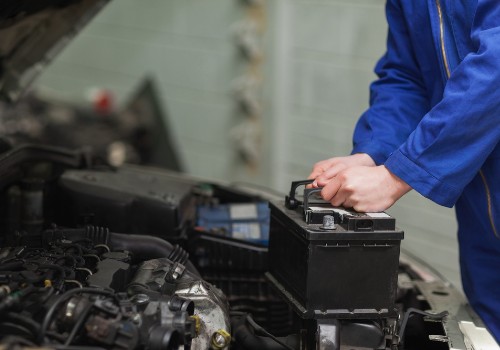
An RV house battery for powering appliances and lights is deep-cycle and often sold as a marine deep-cycle battery.
If you own a motorhome, you shouldn’t confuse the standard engine battery that provides a short burst of high voltage to start your RV with the steady voltage a deep-cycle house battery offers.
Many newer RV batteries are sealed lead acid or AGM, and they perform even better than older deep-cycle units.
The process of deep cycling a battery allows the internal components to refresh themselves through the discharge and recharge of the stored energy, so the battery lasts longer. Most deep cycles won’t need a replacement for five years or more.
Deep-cycle batteries are also compatible with solar power systems, allowing you to wire up your RV panels to store their energy in the house battery.
Some large RVs have a series of batteries and use an inverter to transfer the 12-volt power back to 120v to run the RV during off-grid camping trips.
Differences Between Lead-Acid and Sealed Lead-Acid or AGM Batteries for RV
Flooded Lead-Acid RV Battery
Flooded lead-acid batteries have six internal cells that each hold 2.1 volts. A 12-volt battery will provide 12.6 volts of output power for your camper. This type is also known as a “wet” battery.
Pros of lead-acid batteries:
- Less expensive
- Can handle a high discharge
- Not difficult to maintain
- Sold just about everywhere
- Delivers decent power after a partial charge
The top cons of a lead-acid battery are the potential risk of burns from leaking acid, overheating the cells, requiring ventilation, and must be set upright in the RV.
Sealed Lead-Acid / Maintenance-Free Batteries
- MAINTENANCE FREE: 12.99x 6.73x 8.43 inches. Weize 12v 100Ah sealed lead acid battery is manufactured with absorbent glass…
- OPERATING TEMPERATURE: Charging Temp ranges from 14℉ (-10℃) to 122℉ (50℃), discharging Temp ranges from 5℉ (-15℃)…
- LONGER LIFESPAN: Compared with flooded counterparts, its lower self-discharge of 1-3% per month allows long storage before…
- APPLICABILITY: With mature, reliable and well-understood technology, WEIZE 12V 100ah deep cycle battery is durable and can…
- WARRANTY: 1-YEAR. WEIZE aims for quality followed up with quality customer service, Amazon doesn’t deal with the return of…
VRLA batteries (valve-regulated lead-acid), also commonly known as sealed lead-acid or maintenance-free (MF) batteries, function a bit differently, but they provide the same long-term battery charge cycles that an RV needs.
The most significant difference is that the unit is sealed, so you don’t have to worry about leakage of corrosive sulfuric acid from the cells, venting, or monitoring water levels.
This type of battery discharges less (only 1-2%) when not in use, so you can avoid running the battery down during months of storage.
Expert RV owners lean toward the VRLA style of battery and willingly pay more for them because they also:
- Are positionable in any way
- Can handle temperature extremes
- Have no terminal corrosion issues
- Provide a longer life
- Handle road vibrations better
VRLA batteries are either a gel cell or an absorbed glass mat (AGM).
Gel batteries suspend the electrolytes in a silica additive so the cells stay covered. Gel batteries are most common for very deep-cycle battery charge applications, such as in an RV.
AGM batteries are technically “wet” batteries, as the electrolytes are free-flowing, but fiberglass mesh material sandwiches and protects the lead plates, so you can fit more inside each cell, enhancing performance.
5 Tips For Better RV Battery Performance
1. Use the Right Battery and Charger Combination
Not every RV battery can use the same converter to charge the system.
Want to Connect With a Community of Over 1,078 RV Enthusiasts?
Figure out which type of battery is in your RV bank, and use an appropriately sized and rated converter or inverter to support the amount of power you’re trying to create and maintain.
Your RV battery system components work as a team, and if one member fails, so do all the rest.
2. Switch Off RV Batteries When Not In Use
- Heavy Duty: ABS plastic housing, durable made for safety use, rear cover insulates terminals against any short of circuits,…
- Operation: On/Off 2 positions, 275 A continuous at DC 12V, 455 A intermittent at DC 12V, 1250 A momentary at DC 12V.
- Compatible: used for DC 12 – 48 V systems to isolate and secure the electrical system, can stand alone or be locked together…
- Purpose: eliminate any power draw from the battery when vehicle or boat is not in use, disconnects the battery safely.
- Copper terminal stud size: 3/8″ (10 mm) x 2, very easy to install, universal used for car, vehicle, Rv and boat, also…
The best thing you can do for RV batteries during storage is to use or add a battery disconnect switch so it doesn’t drain from parasitic loads.
While you may think all your RV features are off, CO2 detectors or other electronics can draw down the battery charge to unsafe levels.
3. Don’t Let RV Batteries Get Too Hot
High temperatures can rapidly degrade the lifespan of camper batteries, and this issue is often exacerbated when the batteries are situated within an enclosed RV compartment.
Check on the temperature status of your RV battery and try to provide extra shade to the area if direct sunlight is beating on the compartment door.
4. Monitor RV Battery Condition
Monitor the fluid levels, terminals, and wiring connections on your RV house battery bank regularly.
When you camp in hot, dry locations, the cells inside a flooded lead-acid battery can evaporate faster than you think. Check levels to maintain good coverage of the lead plates, and only use distilled water to refill low cells carefully.
Corrosion around terminals and ends of wiring harnesses can impede proper electrical flow and hamper battery charge. Keep posts and wire ends clean and replace any that appear damaged. Don’t forget to inspect your battery’s ground wire that runs to your camper’s chassis, as this is another common spot that could cause issues.
5. Don’t Allow the RV Battery to Go Dead
- ?Widely Application —— Battery Gauge works for 12V/24V, 36V, 48V/72V battery of carts, marine, motorcycle, ATV, tractor, truck,…
- ?LED Bar Indicate —— Specifically designed to monitor the power level of battery while charging or discharging. Display of 10 segment…
- ?Durable & Waterproof —— With sealed encapsulated and complete waterproof IP65
- ?LED Flash Warning —— LED Flash for low charge and high charge warning
- ?Easy Installation —— Comes with installation accessory, easy to install
Any battery will become useless if you allow the charge to drop below 45% of full power. Going lower than 20% may prevent you from recharging the battery at all.
Why reduce an expensive battery lifespan by letting your charge drop too low before you recharge it again? While the battery will reboot for a while, it will quickly weaken and possibly leave you without the power to run your RV when you need it most.
If you dry camp or boondock often, get yourself a battery level indicator so you can see at a glance the charge status of your battery and prevent it from discharging too low.
Final Thoughts
RV battery operation and maintenance is just another aspect of recreational vehicle ownership. The more you learn about the topic, the better you can handle battery charging issues that could derail your camping plans.
Yes, your RV battery charges when you plug in your camper, but there’s more to the story. By using this guide, you now know how to build and care for the best RV battery system for your camper.
Safe and happy travels!
"Man cannot discover new oceans unless he has the courage to lose sight of the shore."
-- Andre Gide

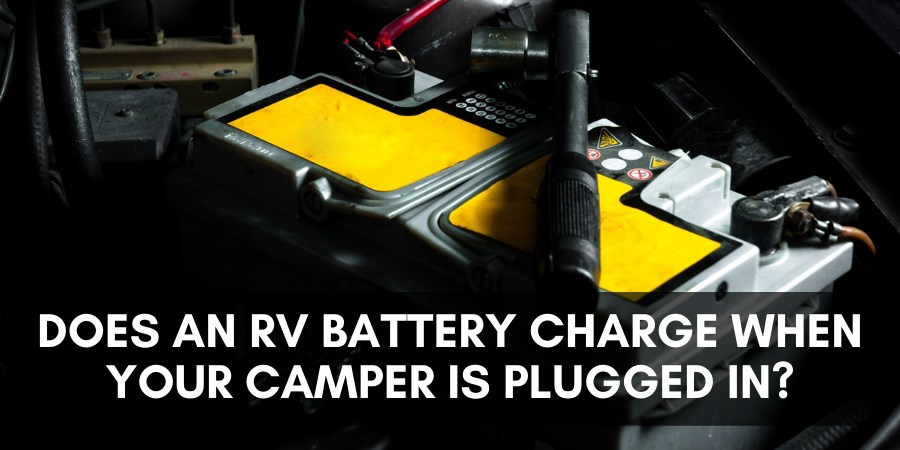

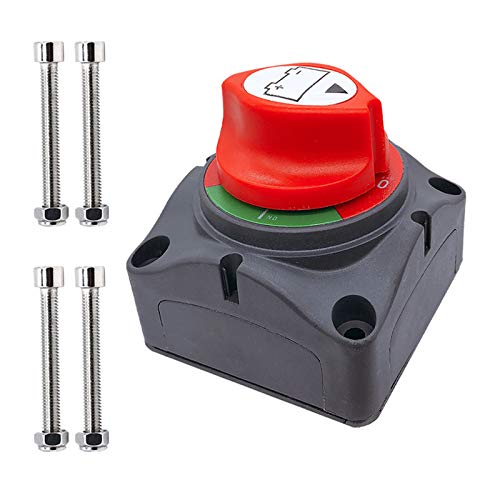

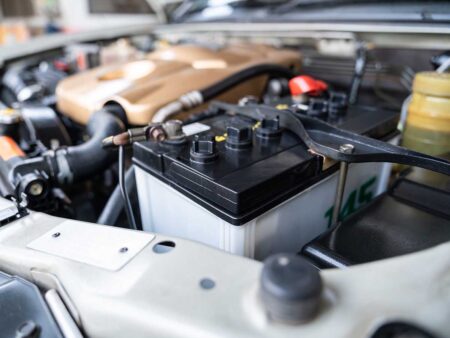
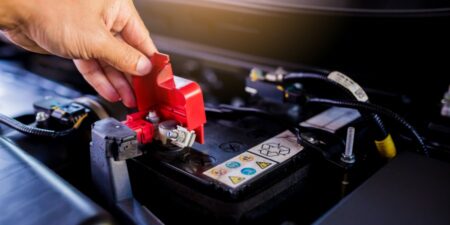
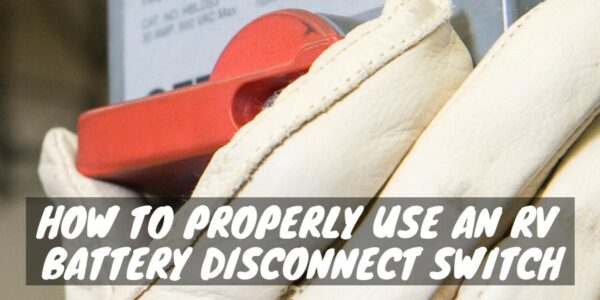
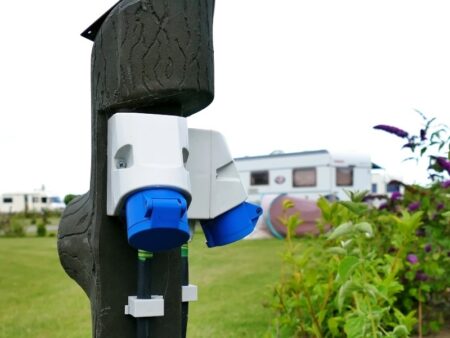






when I plug into shore power the circuit breaker in my house trips. Any thoughts